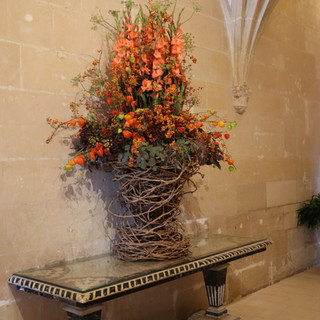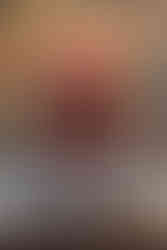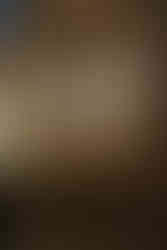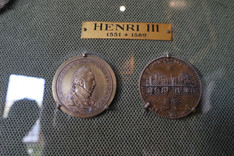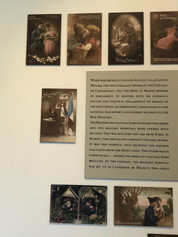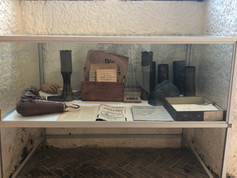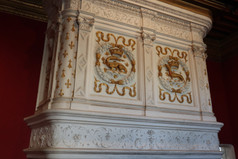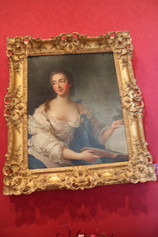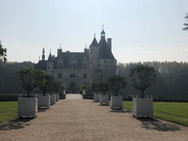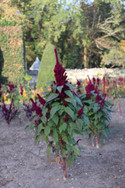Oct 20 Château De Chenonceau
Our first stop today is at the Château de Chenonceau. Here is a brief history of the château.
The original Château des Marques was built near the river Cher. This château was a simple form and had a mill on the water. It first appeared in historical documents was because of the actions of Jean Marques I during The Hundred Year War (1337 to 1453) between the France and the English. In 1411 Jean Marques I supported the Duc de Bougogne and the English. The enemies of the Armagnac party, and King Charles VII. When the English where driven out of the Loire Valley, judgment was swift for the traitor and on King Charles VII order both château's the Marques family owned was burned down, and the forests was cut down to the height of infamy. For the Marques family the forest was their major source of income, and this was the start of the family's ruin.
On April 3,1432 Charles VII pardoned Jean Marque's son at this point the war was still on going, and the king needed military support financially so the king had to make concessions. The Marques Family rebuilt their home.
By 1494 the Marques misfortune was beneficial to Thomas Bohier the King's Lieutenant General. It tock twenty difficult long years for the royal treasurer to evict the Marques family and acquire the land throw subterfuge, frontman and constant harassment.
On Feburary 17, 1512 Chenonceau became the idea place for the Bohier couple to showcase their success. Thomas was appointed as a tax collector for the newly acquired lands of Duchy of Milan (in Italy) by François I durning the battle of Marignan in 1515. Thomas abused his power as tax collator. Thomas had earned a fortune and a taste for the Renaissance art. During this time he encourage his wife' s ambition Katherine Briçonnet with her artistic and financial support.
When the King learned of Tomes abuse of power François I decided to reclaim his due and demanded the Bohier's heirs to repay the family's debts to the crown in 1535. Antoine Bohier is Thomas son finds himself in dire circumstance with King Fraçois I in demanding he repay all his father's debts to the crown of 190,000 livers is 213,889.65 todays Euro's so that would make it $241,562.69 Dollars he give back for both Chenonceau and Houdes to the king. Diane de Poitiers stopped this from happing because she had always wanted to be the sole owner of this prized château and to have it removed from the royal domain. She managed to to do this on June of 1547 by the help of King Henri II.
King Henri II used a letters to grant his mistress Diane de Poitiers all rights of ownership and possession and to do as she saw fit as an inheritance. By 1550 Antoine Bohier felt under attack from all sides that he fled france to Venice he only returned once to France in 1556 under force to finals the sale.
Diane de Poitiers was twenty years older than King Henri II, and she was a keen hunter and loved to swim. When she was well over fifty she looked liked she was thirty. She held total sway over her lover, and was exceptionally greedy. Her motto was "More is better". Over the course of time Henri II had given Diane jewels, lands, and château's. She was equally avaricious in the managing of her properties. This is shown perfectly in how she because the undisputed owner of Chenonceau. It was said the then Queen Cathrine had to wait for Diane's permission before her husband would share her bed.
At the jousting tournament when the kings eye was pierced with the lance wounding him fatally. It is said that Diane was grief stricken. Catherine demanded that Diane return all jewels, and property back to the crown before Henri II died. When Diane was informed her replay to the queen's messenger "She did not fear her enemies, and thought king had died, she had no intention of following him." Diane returned the jewelry and her other chateau but Catherine had always wanted Chenonceau. Diane always set back dismissive refusal. When it came down to the final confrontation between Diane and Catherine, Diane wisely complied and agreed to exchange Chenonceau for the Château Chaumont-sur-Loire this property higher value than Chenonceau. The exchange agreement was signed at Château de Blois in late 1559. Diane rarely went to Chaumont, instead she decided to move to her other property in Limours, where she lived in relative obscurity.
On July 10, 1559 King Henri II died from Sepsis from a jousting back then it was a sport and his death played a key role in the decline of the sport. This left Catherine de Médicis a widow and she wasted no time pushing aside Diane de Poitiers despite the inheritance. Diane de Poitiers left Chenonceau for Chaumont-Our-Loire.Plus the rising tensions between the Catholics and Protestant were leading to civil war.
March 17, 1560 there was attempted to kid-nape the young King Françoice and his Queen Marie Stuart from Catherine de Médicis and what they clam as her harmful influence as their justification to the kid-naming. This was the start of the Amboise conspiracy. The plot was exposed and crushed. The conspirators were hanged on the balcony of Chateau d'Amboise. After this was done Catherine moved the young king and queen to Chenonceau. On March 31,1560 King Francois and his three brothers made their grand entrance into their mother's chateau. they where greeted by a thirty canon Sulute.Here Francoic and Marie enjoyed the festivities while Catherine ran the France from the Green Study. Francois II would die several months later. Marie Stuart returns to Scotland.
We fast forward to the reign of Henri III
August 1,1589 a Catholic fanatic Jacques Clément fatally stabbed King Henri III. The kings final thoughts were about his wife Queen Louise de Lorraine:" Madam, I hope I will be very well; pray to God for me, and do not leave this place." Louise received this message at Chenonceau. She took his last wishes to heart. As an act of faith Louise entered formal mourning at the château, which she had inherited from Catherine de Medici. Louise was forgotten about by all, and struggled to maintain a lifestyle worthy of the dowager queen. Louise had wrote several letters to her son King Henri IV requesting he remove the troop of soldiers camped on her property, and to sent her mouthy allowance. With circumstances astray where the king did nothing. Henri IV was devoting all his energy to securing his role as King. The please from his mother to find the murderers of his father Henri III were being viewed as motive to revive the religious conflicts. Louise de Lorraine passed away in 1601 with this passing Chenonceau lost its last royal resident.
Edict of Nantes
The last remaining obstacle to religious peace in France was the last Catholic League leader; Philippe-Emmanuel de Lorraine, Duc de Mercoeur, and the brother of the late dowager queen Louise de Lorraine. The Duke decided to send his wife Marie de Luxenbourg, to negotiate his surrender with Henri IV but the king was not interested. So the Duchesses turned to the king's favorite, Gabrielle d'Estrees who the duchesses was already arranging the marriage of her only daughter Francoise to Cesar de Vendome ( the legitimate son of Henri IV and Gabriella) The contact for the duke surrender was signed on March 28,1598 one month before the Edict of Nantes.The late Dowager queen Louise de Lorraine had offered Chenonceau as a wedding gift. Cesar de Vendome would not acquire Chenonceau until 1624.
Louise Dupin
Sometime in 1733 Claude Dupin purcheded Château de Chenonceau from Louis XIV. Claude wife Louise brought life, and festivities back to Chenonceau. Louise was the daughter of Samuel Bernard and Madam Fontaine. They had three daughters. Claude was called the lady of Enlightenment. She was inspiredly by the new ideas the Enlightenment. She welcomed to Chenonceau the greatest scholars, philosophers and academicians in France to her famous literary salon. Claude was an exceptional woman. She was the first to draft a Code of Women’s Rights, with the assistance of her secretary, Jean-Jacques Rousseau was hired as her secretary and her son's tutor. He enjoyed a period of serene happiness at Chenonceau that is described in a number of his works. Rousseau dreamed of an impossible relationship with Louise. You see Louise was faithful loving wife to her husband. Aware he had been too presumptuous he acknowledged it. " Madam Dupin, the most beautiful of the three sisters, and the only one who was not accused of misbehaviour." Rousseau wrote two letters of apology to Madame Dupin.
When the French revolution started Louise was 83 years old. Her age did not protect her or the château from the conflict. She was still viewed as a former noble. Fortunately she had a priest as an ally who was a priest at Chenonceau his name was Abbe Lecomte. The priest was quick to understand the château was in danger of destruction. Abbe Lecomte addressed angry crowd: "What! Citizens! You have only a single bridge between Montrichard and Blere! And you want to demolish it! You are enemies of the Public Good" his words saved the château but it also raised another problem. They had to prove that Chenonceau was not a royal property. So Louise and Abba Lecmte presented the documents proving that the château is indeed private property. In a sort of act of purifying the château, they burned seventy-eight portraits of monarchs including one of the Sun King. Also thrown in to the fire was any woodwork and paneling with any decoration of Henri II and Catherine de Medicis. So anything and every thing that had the any marker royalty was burned to ashes. Louise and priest transformed the chapel into a wood storeroom, which save it from destruction. Thanks to their efforts visitors can still read an inscription by Marie Stuart's Scottish guard.
On November 20, 1799 Louise Dupin passed away at the age of 93, according to her wishes she was laid to rest in a tomb built in the garden, her grate nephew Rene Vallet inherits Chenonceau.
Marguerite Pelouze
In 1864 Madame Pelouze born Margaret Wilson was a rich heiress. She decided to make Chenonceau her's to showcase of her success. She purchased the property form Villeneuve for 850,000 francs ($877,728.70 Dollars) and then spent millions more restoring it to restore to it's conditions during Diane de Poitiers's era. In 1875 she hired the architect Félix Roguet to restore château de Chenonceau. Reguet almost completely renews the interior and removed several of Catherine de' Medici's additions, including the rooms between the library and the chapel and Catherine's alterations to the north facade, among which were figures of Hercules, Pallas, Apollo, and Cybele that were moved to the park.
With all the money Madame Pelouze spent on these projects and elaborate parties, her finances were depleted their was a financial scandal in 1887 called "decorations scandal" between her brother, Daniel Wilson and his father in-law the fourth French Republic president, Jules Grevy handed in his resignation.That led to Madame Pelouze ruin…and forcing her to sell the château in 1888 to Credit Foncier a French national montage back, and then in 1913 the chateau was sold to Henri Menier.
Military Hospital
On Henri Menier death, his brother Gaston, a progressive deputy and later senator, transformed Chenonceau into a military hospital for the duration of the Great War. He met all of the operating costs, as he did at Noisiel, headquarters of the Menier chocolate factory, where he set up a second hospital. From 1914 to 1918. The Château de Chenonceau gallery host Dr. Morel and his nurses to treated over 2,250 wounded soldiers, during the full four years of the Great War. On December 31, 1918 the last wounded solder left Chenonceau.
The line of demarcation
June 22, 1940 France lost a major battle that would have catastrophic consequences. France was cut in two by a impassable border, the line between Free France and the side controlled by the Germans during wold war 2. At this time the Menier family called the château home. During World War 2, the Grand Gallery at Chenonceau became the sole point of access to the free zone, and the Menier family helped to smuggle out villagers and Jews fleeing the Nazi tyranny, to the free south of France. The German patrols watched all rivers, moats, at regular intervals trying to block all passageway to freedom. The curator had a set of keys to open the gallery door to let the refugees pass throw when the coast was clear. Thank god Diane de Poitiers had the bridge built to connect the chateau to the other side and than to Chatherin de Medicis for adding shelter or this could not have happen. In both the Great War and WW2 both used as hospitals and is the only rezone why it was not bombed. The Germans bombed a lot of bridges to have that control.
The US president, Harry Truman, visited the château on his first trip to France.

The Marques Tower
This Tower is named after the Marques family who had ownership of the chateau. The tower and the well are the only items still standing from 1411. The well is ornamented with an eagle and a chimera, which are the insignias of the Marques clan. The château entrance shows the coats of arms of the first royal owners of the place. The Boheir teared down the former château des Marques. The open area in front of today's Chenonceau is where the Marques château once stood. The new château was built on the pillars of the former mill. In addition to the new position over the water the château was nearly square floor plan if it was not for the addition of the chapel and the study.
Font door
Above the door you will see the stained glass window had to be replaced in 1954 by Max Ingrand this image in the stain glass is representing of "the legend of Saint Hubert".
( I just love the front door with all the wear and tear over the course of time it is still stunning, and on the outside the stainglass is so so but omg look at it from inside)
The Hall
The hall was an architectural element that became fashionable during the Renaissance. It let's to the other rooms of the residence. The hall was made in 1515 This is one of the most remarkable examples of decorative sculpture from the First French Renaissance. The hunting table is made from Italian marble and is from the Renaissance. (I did not get a good full length photo was to crowded, the tour guid would not wait. I was trying to lesson to the guid and take photos. Sadly this happen a lot) (I did taking these but the photos do not give it justus. Even thou I did not get whole hall image that is ok the ceiling looks exactly like the one going up staircase you will see later.)
The Guard Room
was used by the armed men who was responsible for the king and queen's protection. you can see on the fireplace Thomas Bohier's emblem.( look at how wear out the tile on the floor is it is organelle to when Thous and his wife built Chenonceau.Near the walls you can still make out the pattern.)
The Chapel
The painted Renaissance stained glass windows from1954 where destroyed during bombing during world war II in 1944.They where replaced ten years later by glass blower Max Ingrand.
Madame Dupin enlarged this room and added the organ (photo 4), later it was restored to its original size.By Madam Pelouze.
Behind the alter is the crypt Madame Pelouze had built. She wanted to be buried here, but because of the bankrupt she had to sell, and the crypt stayed empty.
On the right side the alter is the Loggia it house a white marble carving "Virgin and Child" by Mino da Fiesole, a fifteenth century Florentine sculptor (photo 7). On the left side of the alter is a white plaque. On the wall we can still read inscription's writen in Scaooish, left by Mary Stewart's Scottish gourds: I think the transition in English: "Man's anger does not accomplish God's Justice and Do not let yourself be won over by Evil" dated 1573 (photo eight).
On the walls are decorated with painting's: the first one is The Virgin In A Blue Veil by II Sassoferrato 1605, the second painting is i believe La misé au tombeau, the last one is also believe called L'Annonciation.
The chapel was saved during the French Revolution thanks the quick thinking of Madame Dupin and her priest to turn it into wood store.
(is a really small space when there is more than three people inside but it amazing to think over time who was in that room)
Diane De Poitiers's Bedroom
To the left of the bed on wood table with glass coving it is a small bronze statue of Diane d'Ane this is the only remaining reminder in this room that the Duchesse de Valentinois aka Diane De Poitiers held a place in the heart of Henri II.
The fireplace dominates this room with a large portrait of Catherine De' Medici painted by Sauvage that hangs on the fireplace as if she is trying to dominate her rival space. Also on the fireplace are two sets of sculptures of two winged woman standing on two lions head symbolizing strength. The fireplace was done by Jean Goujon.
In the room you will see the intertwined initials and stand alone initials of H for Henri II and C for Catherine, testifies to a love that started before 1533. Even before Catherine arrived in France she was already in love with Henri back then he was Duc d'Orléans. Henri II was not supposed to be king. Catherine was tormented her entire life by the cruel irony that their intertwined initials formed the D of Diane de Poitiers. The restoration on the letter was done by Madame Pelouze.
This symbolism in the fireplace with the winged woman also repeated itself in the tapestry behind the bed. The tapestry was woven in the sixteenth century: The Triumph of Strength. On top in Latin are a few words translated; "He who loves the gift of heaven with all his heart does not shrink from the deeds dictated by Piety." The four post bed, the Henri II armchairs are covered with Cordous leathered the magnificent marquetry table with the Bronze statuette talk about before next to the bed are all from the Renaissance era.
The Green Room
was used as Catherine's office when she became regent on Henri II's death.
Their is a gorges 16th century Brussels Tapestry called To The Aristolochia in celebration to the recent discovery of America.The tapestries both Gothic and Renaissance. It's green color which is almost blue, and it's theme was inspired by things found in America unknown in Europe until 1492.
The ceiling is in its original state from the 16th century. You can see there are two intertwined C of her initials.
(this room is really small and I keep waiting for it to not be so crowded to get better photos as you can see from lack of images that did not happen during to tour guid and crowd.)
The Green Room Library
This small room was her library and Catherine had her desk she had a magnificent view of the Cher river, Diane's garden and the island.
The ceiling dates back to 1525, Italian styled made out of Oak. Also one of the coffee ceilings of this type discovered in France. The ceiling also bears the initials of builder of Chenonceau: T.B.K for Thomas Bohier and Katherine Briconnet.
Catherine had a great bibliophile. After her death they recorded more than 4,500 works, 800 ancient Greek and Latin Manuscripts that where housed various royal residences.
La Cour DeFrance Au Chateau de Chenonceau Médaills el Effigies (Coins Anciens)
( I was taken back by this coin collection) (once again room small lots of people could not get good images and the guid would not wait on me taking photos)
The Gallery
throw a small passage from Dian'e room we enter the gallery. It is 60 meters in length (196 feet) by 6 meters wide (19 feet) has 18 windows.The ceiling has its exposed joist. The floor is black and white taffy and slate tile in a checkerboard patterned.
Catherine's wanted make the gallery a showcase for Italian work of art. At great expense to bring: busts, medallions, statues, and marble and porphyry vases. At either end are two supper Renaissance fireplaces, one of them is for decoration surrounding the South door that leads to the left side of the Cher river bank.
In 1577 was opened officially used a ballroom for a lavish festivities in honer of Catherine's son Henri III.
The medallions of famous people was added in the 18th century Catherine's collection antiques was saved by Marie de Luxembourg during the stormy succession of there cistern law Louise de Loraine, was literally looted by the two grandsons of Francoise de Lorraineand Cesar de Vendome. Princes Louis- Joseph and Philippe spent far too much moneyed Dupin cortisones. They removed all of Catherine's sculptures, except for two bust and five/six medallions, transferring some to their chateau d'ante the rest went to Louis XIV's Versilles.
During the WW I the owners decided to setup a military hospital in the gallery at his own expense. The wounded solders could fish on the Cher from their beds. During WW II the gallery was on the line of demarcation. it was throw the south door that the owners to get large numbers of people into the free zone. During the war the German artillery unit was kept at the ready to destroy Chenonceau.
Gallery During WW I
The Kitchens
are in the two huge bases forming the first two piers build in the bed of the Cher river that use to be the former Marques family Mill. They consist of four vaulted rooms: Kitchens, Dinning Room for the staff, Pantry and Butchery.
The Pantry is a low room halls connecting to the dinning room for the staff dinning room and the butchery. The pantry is next to the large kitchen. There are more than 150 copper utensils including pots, cake pans. Some of them have the name " Menier" or "Parc Monceau"
Boats bringing supplies up the Cher would moor on the landing platform situated under the arches, to quickly deliver goods at any time day or night. According to tradition, the landing stage was called the Queen's Bath and then Diane's Bath. (I'm so lost on that one but ok)
Catherine was famous for her love of festivities, food and celebrations. She transformed the chateau into a pleasure palace. She spent lavishly so she could distract her sons from the vicissitudes of power. In 1577 one banquet went down in history. It cost the queen 100,000 livers to todays Euro's $112,168.44 to $126,654.99 todays Dollars. This forced her to take out a loan. She had many Italian chefs at the chateau.She is also the one who introduced pasta to French.
The kitchens here are among the most beautiful from the French Renaissance.
Francois I's Drawing Room
Francois I owned Chenonceau from 1535 to 1547 he loved his 12 years and wanted this lovely site have his home be in the midst of such beautiful countryside, but there was no woman or mistress on hand to bring life to this old soul. So it remained a hunting lodge, surrounded by lush forests and although the king rarely spent much time there. The memory of the previous owners was still fresh. Thomas Bohier's motto is on the the fireplace with is a perfect example of a Renaissance. Thomas's family coat of arms is above the door(9&10)photo, it is framed by two mermaids.
The furniture is made up of three French credence tables from the 15th century(photo6) and a 16th century Italian cabinet with its mother of pearl and fountain pen engraved ivory incrustation is typical Florentine Renaissance style was a wedding present to Francois II and Mary Steward on April 24, 1558 (photo 1&2).
On the wall (photo5) is a portrait of Diana de Poitiers as "Diane the huntress" by Primaticcio. The painting was painted at the Chateau in 1556its frame bears the arms of Diane de Poitiers, Duchess of Etampas. the next painting is of "The Three Graces" by Van Loo, it represents the young ladies of Nesle: Madame de Chateauroux, Madam de Vintimille and Madame de Mailly, three sisters, successive favorites of King Louis XV. A painting of Gabrielle d'Estrées by Ambroise Dubois, Gabrielle was a favorite of Henri IV(photo4).
Louis XIV's Drawing Room
is also known as the red room, because of Louis XIV's visit on July 14, 1650. During his 2nd list, the Sun King offers his ceremonial portrait by Hyacinthe Rigaud the frame is by Lipautre (photo6). The sun king offered this painting to his uncle, the Duc de Vendome, along with the furniture and chairs, covered in Aubusson tapestries. A console made by the Famous cabinet by Boulle.
The Renaissance Fireplace is decorated with the salamander and the ermine, the heraldic animals of King Francois and Queen Claude de France (photos3) The stoat back of the fireplace bring back the memory of Francois and Claude(photo4)
The ceiling is a French-style (photo1) is a cornice that goes all the way round the exposed joist. The ceiling bears the Bohier's initials(T.B.K.)
(Photo5) painting next to the Louis XIV is the painting " The Child Jesus and Saint John-The-Baptist by Rubens. Bought from Joseph Bonaparte who had been placed by his brother Napoleon I on the Spanish throne. (Photo9) is "The Princess Of Rohan" by Nattier. (Photo8) Portrait Of "Philip V" king of Spain and grandson to Louis XIV. (Photo 11) Is the portrait of Samuel Bernard wealthy Banker of Louis XIV and father of Madame Dupin was panted by Mignard.
(photo 1) is the portrait of Louise Dupin by Nattier. Louise Dupin was the owner during the 18th century. She defended the Encyclopedia (is a person who writes, edits, or add to the encyclopedia, she welcomed writers by there last name's and their work ether done at or about Chenonceau: Voltaire, Rousseau, Sand, Montesquieu, Diderot, d'Alembert, Fontenelle, Flaubert, Yourcenar and Berardin de Saint Pierre to the Chateau. Her kindness and generosity and intelligence saved the Chateau from completely being destroyed during the French Revolution.
The Staircase
is ofcourse how you access the upper floor was by on of the first straight staircase also known at "banister on banister" built in France, it was modeled from the Italian design. This left the spiral staircase in the past. This staircase was one of the architectural innovation that Thomas Bohier brought back from his time in Italy. It's covered with a pitch vault, whose coffers are created by a system of ribs intersecting at right angels and decorated with human figures, flower's, and fruits.They human figures that had a religious veiw where destroyed during the Revolution.
When the staircase turns for the landing was a former balustraded loggia with a killer view of the Cher.
Katherine Briconnet's Hall
the flooring on this floor is tiled with small Baked clay ties, stamped with fleur de lis pierced by a dagger. The ceiling is mad of exposed joints. Above the doors are marble medallion brought back from Italy by Catherine with the faces of Roman emperors; Galba, Claude, Grmanicus, Vitellius and Nero. The six Audenarde Tapestries from the 17th century represents Hunting scenes from Van der Meulen's sketches. The hall opens to Balconey where you see the Front of the Chateau. (was not able to get full image sorry)
The Balcony
from this balcony you can see the Marques tower and the forecourt which traces they layout of the medieval fortress. On the right side we see Diane de Poitiers garden guard by the Chancellerie. To the left we see Catherine de'Medici's garden offering grater intimacy with its central pool.
The Five Queen's Bedroom
This bedroom was given the name in memory of Catherine de' Medici's two daughters and three daughters in-law. Her Daughters: Queen Margot wife to Henri IV, Elisabeth of France wife to PhilippeII of Spain. Now the daughter in-laws: Mary Stuart wife of Francois II, Elisabeth of Austria wife to Charles IX and Louise of Lorraine wife to Henri III.
The 16th century coffered ceiling is made of the panelling from the antechamber for Louise of Lorraine's apartment.
The fireplace is a Renaissance. The walls are covered with a 16th century Flanders tapestries representing: The Siege of Toy and The Kidnapping of Helen, CircusGame in the Coliseum and The crowning of King David. On the left side of the fireplace is part of a 16th century tapestry illustrates an episode in the life of Samson.
In this room the furniture is a four poster bed, two Gothic credences topped with the busts of two ladies in 15th century polychrome wood, and a studded travel trunk.
Catherine De' Medici's Bedroom
has a square painted gilded coffered wood ceiling, that was created in the 19th century. The compartments have a number of initials in the center of the squares. Like the intertwined or crowed letters for Catherine and Henri II ; C and H, a long with F for Francis I, A for Anne de Bretagne. The E could be for Eleonora of Austria, the sister of Charles V and second wife to Francois. The squares are decorated with elements on the carved ceiling of the green sturdy.
The canopy bed is Renaissance style, and is decorated with reliefs featuring multiple carved motifs: profile portraits from the antique medallions. The structure of the bed can be dismantled for it is held together with dowels when it was necessary to take a part when you movie from one chateau to another. By the 16th century the bed had become a cermonial object, used to display wealth and sumptuous fabrics. The curtains can be closed to keep the cold drafts away from the sleeper, people slept sitting up and in the reclining because the size of these beds. The furniture and tapestries in this room date back to the 16th century. Produced in Flanders, a major tapestry producing region since the 15th century.Next to the bed is a painting on wood by Correggio "The Education of Cupid".
The Print Collection Room
is right off Catherine's room. This room displays a complete and diverse collection of drawings, engravings and prints representing the chateau during different periods, from the 15th century and Diane de Poitiers. It also covers the major phases in the construction of Chenonceau, the tastes of the of various owners and the creation of the gardens. The first has elegant 18th century fireplace.
Cesar of Vendôme's Bedroom.
This room was given this name in memory César de Vendôme he was the son of King Henri IV and his favorite Gabrielle d'Estrées, and uncle of Louis XIV. César was initially given the chateau by Louise de Lorraine as a gift for his wedding to Francois de Lorrain on October 15, 1598. but with all the loans Catherine had the creditors where owed 96,300 livres (is in today Euro is 108,429.47 that would be $122,362.11 in today Dollars) they did not ratify the transaction which annulled the donation from Queen Louise. Marie de Luxembourg took care of the situation and César de Vendôme finally inherited the château in 1624.
Two large, 17th century wooden caryatides from the bedroom window. This is not an architectural element and conceals part of the cornice frieze decorated canons. They are called caryatids in the reference to the Erechtheum sculptures on the Acropolis in Athens.
The ceiling has the expose joints upholding a cornice decorated with canons. The fireplace is a Renaissance style that is covered in gold and painted in the 19th century with the coat of arms of Thomas Bohier. The window opens to the west framed with two wood caryatides from the 17th century. The walls are decorated with three 17th century Brussel tapestrie "The Cycleof Ceres" an illustrating the myth of the change of seasons. The beautiful borders typical of Brussels tapestries illustrating the ancient myth of Demeter and Persephone, worshipped in greek mythology as a symbol of the seasons. The four posted bed and furniture in the room are from the Renaissance era.
It was not until I got to do this blog post that I found out we did not see the second floor. So the stuff we missed out on: Gabrielle d'Estrée's Bedroom, second floor hallway, and Louise of Lorraine's bedroom
Photos of outside
Other cool photos
Short video clip
off to next Chateau that day....





















